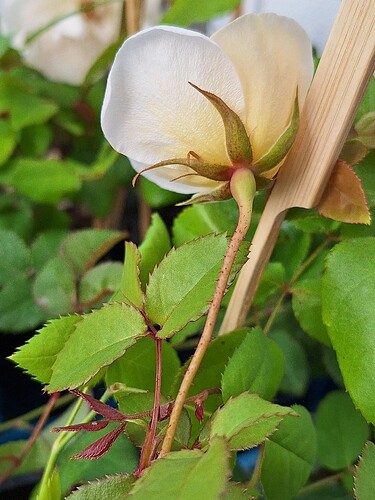How long before thornlessness can be determined with certainty? I have observed that a ‘thornless’ rose can arm itself in youth as a defence against new shoots being plundered. Conversely, a hand reared germination can send up a lovely smooth stem, then flower, only to develop needles on the new stem of a rebloom… ![]()
I don’t think there’s a one-size-fits-all answer because roses vary so much in vigor and habit. Usually, once a rose is behaving in an essentially mature manner (sending out relatively strong, fast-growing, structure-building shoots, along with having older, branched, twiggy parts), you should begin to develop a pretty good picture of its behavior. Rose seedlings that gallop right out of the gate can be fairly consistent with their prickle production even from their first year onward, while less vigorous ones may take extra years to hit their stride enough to be fully evaluated.
Stefan
Ahh…Thank you Stefan. I was hoping you would chime in when after no-one else had an answer for me. My trial germination/propagation of the OP “Heritage” hips exploration is nearing final decision making. Thornlessness would have been a reason to retain any from the experiment. One, as described above, became spikey after the first blooming, but another seems ‘smoother’ now (except for those sneaky ones under the leaves ![]() ) than before the first bloom. We are talking about 20 weeks old.
) than before the first bloom. We are talking about 20 weeks old.
With my first hand pollinated hips fattening I am looking to clear the decks of any trial plants not falling in line with my program so I probably won’t wait a whole 2 years to assess those beginner, experimental ones.
For my experience if strong base shoots are thornless, you may make sure that this plant could be thornless. Last year I bought several ‘Lyda Rose’, the plants are very small, and there twigs are completely thornless. But when they grow long, thick shoots (almost as thick as a straw), all shoots armed with very large, sharp thorns. Moreover, I have several Bugnet-type hybrid rugosas (and their seedlings), their twigs could be almost thornless but basal shoots (especially lower part) are quite thorny.
